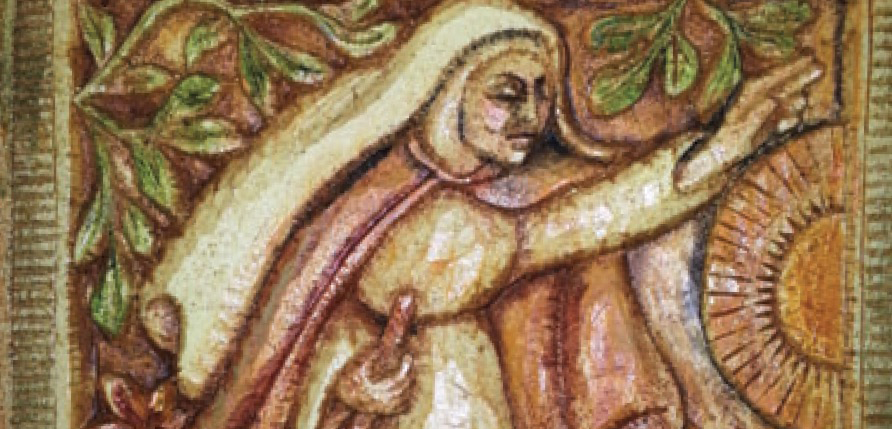St. Margaret’s life is one of the most heart-wrenching stories in the calendar of the saints. She was born blind, with severe curvature of the spine; her right leg was an inch and a half shorter than her left, and her left arm was malformed. She never grew beyond 4 feet tall.
Her parents kept little Margaret hidden away in their house in Metola in the Italian province of Umbria. She was 6 years old when the family traveled to a shrine at Castello, hoping for a miracle. When no miracle took place, Margaret’s mother and father abandoned her.
Some women of Castello found the terrified child and took care of her until they could arrange for her to be adopted. A husband and wife, Venfarino and Grigia, invited Margaret to live with them; they treated her like their own daughter, with love and kindness. She appears to have spent the rest of her life with her adoptive parents.
There was a convent near Margaret’s home, and the nuns became fond of her. When she was about 13 years old, Margaret asked to be admitted as a postulant. Given her years of friendship with the sisters, Margaret expected that she would be happy in their convent. She was in for a disappointment. The nuns were lax in keeping the rule of their order and even in keeping the routine of daily prayer and meditation. Margaret, on the other hand, was intensely devout.
The lack of fervor in her sisters surprised and confused her, while Margaret’s zeal made the nuns self-conscious, angry and resentful. Ultimately, the superior of the convent asked Margaret to leave. She returned to her adoptive parents and at age 15 joined the Third Order of St. Dominic, which permitted her to wear the habit and take the vows of a nun but still live at home where she felt loved and secure.
Margaret’s disabilities did not make her bitter; rather, she became one of the most generous, sympathetic people in Castello. She nursed the sick, consoled the dying and visited prisoners. Margaret said that in the sufferings of her neighbors she saw the image of the suffering Christ. As for her own disabilities, she regarded them as a means to unite her pain with the pain Christ endured on the cross. Her courage, her patience and her deep religious devotion won her the affection of everyone in Castello.
Margaret died when she was 33 years old. At her Requiem Mass the crowd was so great it seemed that the entire town and all the peasants from the countryside had come to the funeral. Th e parish priest planned to bury Margaret in the churchyard, but after the Mass was over the mourners insisted that she must have a tomb inside the church, with all the other distinguished dead of the parish.
The priest and the congregation were still arguing the point when a girl whose legs were crippled dragged herself to Margaret’s coffin. She touched the casket, then stood up and began to walk. The miracle convinced the priest to give Margaret a tomb inside the church. Today her remains lie beneath the high altar of Castello’s Church of St. Dominic.
St. Margaret (1287-1320) is the patron saint of the poor and anyone dealing with a disability or physical challenge. She also is venerated as one of the patron saints of the pro-life movement. Pope Francis declared her a saint through equipollent canonization on April 24, 2021. Her feast day is April 13.
Craughwell is the author of more than 30 books, including “Saints Behaving Badly” and “This Saint Will Change Your Life.”

